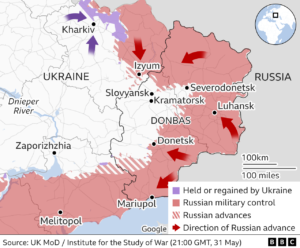
Pic courtesy BBC
Being prepared for war is one of the most effective means of preserving peace.
– George Washington
Russia – Ukraine war has entered the fourth month, with no end in sight. This war has affected every aspect of warfare and international engagement. The war has brought into focus the issues related to the new emerging world order, multilateralism, collective security, nuclear deterrence, economic sanctions, information warfare, and food & energy security.
While the world is eagerly waiting for the end of this conflict, a lot of lessons are emerging from the prevailing situation.
Continue reading “265: 7 Security Lessons from War in Ukraine”


